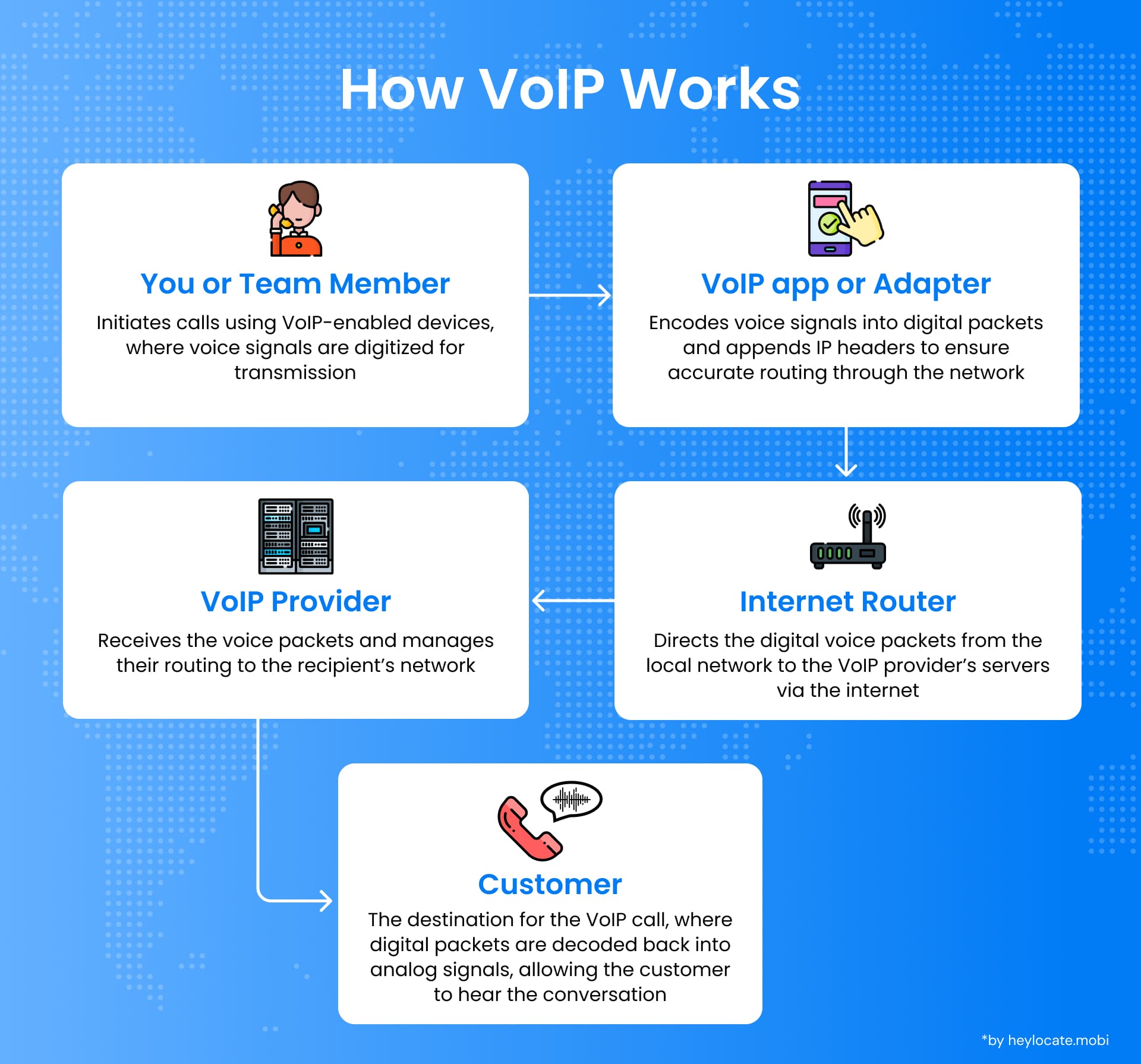Voice over Internet Protocol (VoIP)
What is VoIP?
Voice over Internet Protocol (VoIP) is an advanced technology that facilitates voice and multimedia communication over the Internet. In contrast to conventional telephone lines that utilize the public switched telephone network (PSTN), VoIP transmits voice calls as compact data packets rather than a continuous signal. This methodology is not only more efficient and expeditious, but also offers enhanced flexibility and an extensive array of features.
How VoIP Works
VoIP operates by transforming analog voice signals into digital data packets, which can then be relayed over IP networks. This process entails several stages:
- Digitization and Encoding: The voice signal is converted into digital data and compressed using audio codecs to ensure efficient transmission.
- Packet Encapsulation: The data is then enveloped with IP headers, which contain addressing information to facilitate routing across the network.
- Transmission: The data packets are transmitted over the IP network.
- Decoding and Conversion: Upon reaching the recipient, the packets are decoded and reverted back into analog voice signals.

Advantages of VoIP
- Cost-Effective: VoIP calls are typically more economical than traditional phone calls, particularly for long-distance communication.
- Efficient: VoIP integrates voice, video, and data services, providing a unified communication experience.
- Scalable: VoIP systems can adapt to evolving network conditions and accommodate a large volume of calls.
- Feature-Rich: VoIP offers a variety of features such as call forwarding, voicemail, and conferencing.

VoIP Codecs and Standards
- Audio Codecs: These play a crucial role in VoIP, influencing audio quality and bandwidth requirements. Popular options include G.711 (high quality, high bandwidth), G.729 (low quality, low bandwidth), and Opus (balanced quality and bandwidth).
- Standards: These ensure interoperability across systems and networks. Typical standards include SIP (session management), H.323 (multimedia communication), MGCP/H.248 (media gateway control), RTP/RTCP (real-time transport), and SRTP (secure real-time transport).
Protocol Functions and Implementation
Each VoIP protocol serves specific functions, collaborating to establish and maintain communication sessions. Implementing these protocols necessitates a combination of software and hardware components, such as IP phones or softphones, and a central call manager or IP PBX (Private Branch Exchange) for call routing and control functions.
Key VoIP Protocols
| Description | Protocol |
|---|---|
| Initiates, modifies, and terminates voice, video, and instant messaging communication sessions. | Session Initiation Protocol (SIP) |
| A suite of protocols supporting multimedia communication, including audio, video, and data, over IP networks. | H.323 |
| Controls media gateways in VoIP networks and integrates with traditional phone systems. | Media Gateway Control Protocol (MGCP)/H.248 (Megaco) |
| Delivers real-time audio and video streams over IP networks by handling packetization, sequencing, and timestamping. | Real-time Transport Protocol (RTP) |
| Works with RTP to provide feedback on the quality of the media stream, offering statistics and other relevant information. | Real-time Transport Control Protocol (RTCP) |
| Encrypts, authenticates, and protects the confidentiality and integrity of transmitted data. | Secure Real-time Transport Protocol (SRTP) |
These core protocols contribute significantly to the efficient and secure operation of VoIP systems, enabling seamless communication across various channels and platforms.
Implementing VoIP Solutions
- Hosted (Cloud-Based): Managed by a service provider, eliminating the need for hardware and infrastructure investment.
- Private (On-Premises): Requires organization-maintained hardware and infrastructure, offering more control but with management responsibilities.
- Factors to Consider: Budget, scalability needs, IT resources.
Quality of Service Considerations
Given that VoIP relies on packet-switched networks, ensuring call quality is paramount. Techniques such as prioritization, bandwidth management, and network monitoring are employed to mitigate issues like congestion, latency, and packet loss.
References
- Voice over IP, Wikipedia.org
- FCC – Voice Over Internet Protocol
- What is VoIP, Nextiva.com
- Understanding VoIP www.cisa.gov, pdf
- ”What is VoIP and how does it work”
- Whats is VoIP, getvoip.com/library
- What is VoIP, emitrr.com